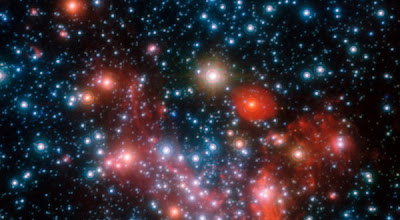When the Earth's Magnetic Pole Shift | Every planet in our solar system, including Earth, has two polar systems. The first is the geographic poles, the surface projection of the axis of rotation of the planet on which manifests itself in the formation of the geographic north pole and the geographic south pole. In astronomy, the geographic poles always occupy 90 latitude in both northern and southern latitudes. On Earth, the geographic North Pole is in the Arctic Ocean, while the geographic south pole is on land that is always covered Antarctic ice thick.
The second system is the polar magnetic pole, which is a pair of points on the surface of the planet where the lines of force magnetic field goes into or out of the body in a position perpendicular to the planet's average surface (magnetic inclination 90). The point where the lines of magnetic force into the body of the planet is the magnetic north pole, opposite the point where the magnetic lines of force out of the body is the planet's south pole magnetically. However this nomenclature is not fully implemented, because in practice the magnetic poles of the name refers to the name of the geographic poles adjacent. Both magnetic poles can be likened to a pair of different ends of a giant bar magnet embedded in the body of the planet, although this assumption is not entirely correct. Magnetic poles is only concerned with the magnetic properties of celestial bodies, is not the nature of the rotation.
Read more
The second system is the polar magnetic pole, which is a pair of points on the surface of the planet where the lines of force magnetic field goes into or out of the body in a position perpendicular to the planet's average surface (magnetic inclination 90). The point where the lines of magnetic force into the body of the planet is the magnetic north pole, opposite the point where the magnetic lines of force out of the body is the planet's south pole magnetically. However this nomenclature is not fully implemented, because in practice the magnetic poles of the name refers to the name of the geographic poles adjacent. Both magnetic poles can be likened to a pair of different ends of a giant bar magnet embedded in the body of the planet, although this assumption is not entirely correct. Magnetic poles is only concerned with the magnetic properties of celestial bodies, is not the nature of the rotation.
 |
| Figure 1. Overview geomagnetic lines of force and the axis magnetisnya. Notice the difference with the axis of rotation of the Earth and the existence of the geographic poles. Sources: NASA, 2009. |




